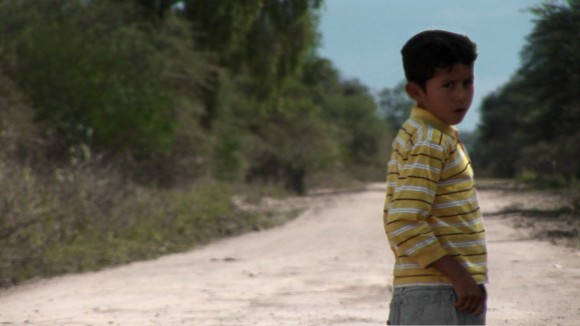FILM: Argentinean documentary leaves more questions than answers
Posted on August 17, 2012 By Barry Hammond Film, Front Slider
 Watching the Argentinean-Canadian co-production, “A Place Called Los Pereyra” – opening at the Metro Cinema Aug. 18 – brings to mind a quote from F. Scott Fitzgerald’s The Great Gatsby: “They were careless people, Tom and Daisy – they smashed up things and creatures and then retreated back into their money or their vast carelessness, or whatever it was that kept them together, and let other people clean up the mess they had made.”
Watching the Argentinean-Canadian co-production, “A Place Called Los Pereyra” – opening at the Metro Cinema Aug. 18 – brings to mind a quote from F. Scott Fitzgerald’s The Great Gatsby: “They were careless people, Tom and Daisy – they smashed up things and creatures and then retreated back into their money or their vast carelessness, or whatever it was that kept them together, and let other people clean up the mess they had made.”
It may sound odd to equate Gatsby with a documentary film which centres on a small Argentinean community in the province of Chaco, 1,450 miles from Buenos Aires. The town is without electricity or phone service, but for five days every year they are visited by a group of young women (and their professors) from the big city. The village people call them “Godmothers.” The film documents one of those visits.
 Directed by Andrés Livov-Macklin (right), who was born in Buenos Aires, studied opera at the prestigious Colon theatre and holds a Fine Arts degree from York University, this is a beautifully photographed film. The landscapes are sumptuous. The village children are cute, innocent and open. The Godmothers are also mostly charming young women in their mid-twenties who seem interested in the community and sincere in their desire to help the children with medical examinations. The teachers at the local school praise the Godmothers as near-mythic figures who return every year to give out supplies and help deserving students attend schools in the more urban parts of the country.
Directed by Andrés Livov-Macklin (right), who was born in Buenos Aires, studied opera at the prestigious Colon theatre and holds a Fine Arts degree from York University, this is a beautifully photographed film. The landscapes are sumptuous. The village children are cute, innocent and open. The Godmothers are also mostly charming young women in their mid-twenties who seem interested in the community and sincere in their desire to help the children with medical examinations. The teachers at the local school praise the Godmothers as near-mythic figures who return every year to give out supplies and help deserving students attend schools in the more urban parts of the country.
It’s when you begin to delve underneath this pleasant surface that the comparison to Gatsby starts to become apparent. The film leaves far more disturbing questions than answers.
Although Livov-Macklin shows the Godmother’s interaction with the children and some of their talks, such as one about birth control with older women in the community, he never really questions the women or their professors. In the vacuum created by the filmmaker’s lack of information, the viewer begins to question the motives of the Godmothers. Are they driven by religion, politics, or are they merely young students who have money and want to share it with people less fortunate than themselves? The fashion sense they display seems to indicate the latter.
Also, as they hug the children and tease one older boy and question him about which one of the Godmothers he likes best, a disturbing sexual element seems to emerge. Are the young women aware of their effect on the males of the village? For some reason, the filmmakers never really show the concrete details of what the Godmothers provide. We see them give out a soccer ball. We see them unloading food early on, but the village hardly seems to need that. We’re told it’s a farming community and the children look clean and well-fed. The students, despite being in a remote location, all have bicycles and backpacks. Did the Godmothers provide these or did they come from the children’s own families? We never find out. We hear stories about them helping students travel and get schooling but we don’t actually see it. Doubt begins to creep in – what exactly do these Godmothers do?
If this begins to sound paranoid, we’re suddenly told near the end of the film that the Godmother’s visits ended suddenly in 2008 and they never came back. Again, no further specifics are supplied. Did they fail to raise the necessary money? Was their funding cut off by some government agency? Did they just get bored? Were they just a bunch of Daisy Buchanans? We never find out. And so the film seems to become something darker and more sinister: a moral tale about the fickleness of charity. The viewer is left questioning the filmmakers’ intent. Is it a feel-good film about sharing or a scathing indictment about the lack of follow-through? You can’t be sure. What’s left is an unsettled, troubled look at children whose dreams we’ve heard spoken, but which may never be realised.
The fashion in documentary at the moment is not to editorialize – but for the viewers to come to their own conclusions, some information is necessary. In “A Place Called Los Pereyro,” we’re denied such communication, which is replaced by an aura of unnecessary mystery.
A Place Called Los Pereyra from Jueje Jueje on Vimeo.













